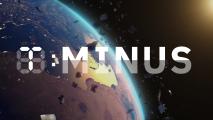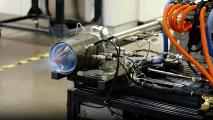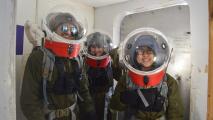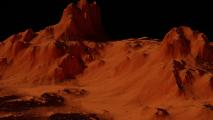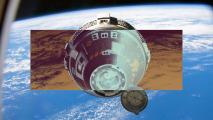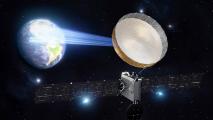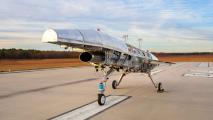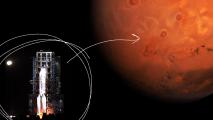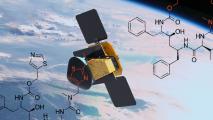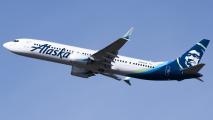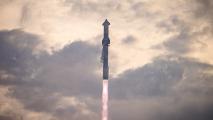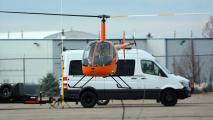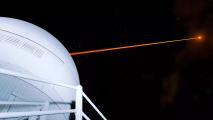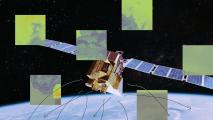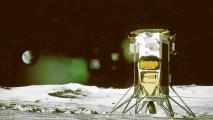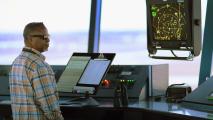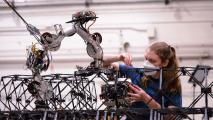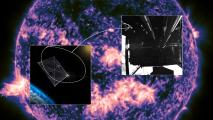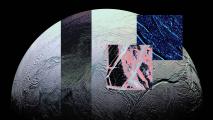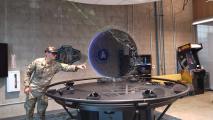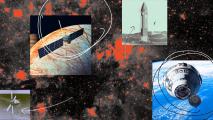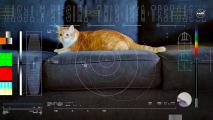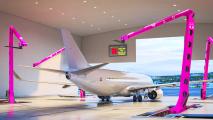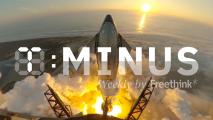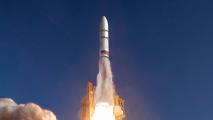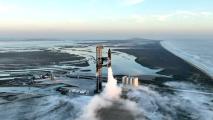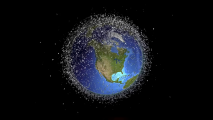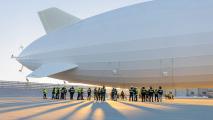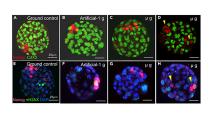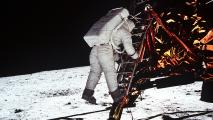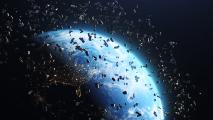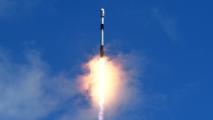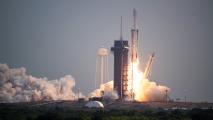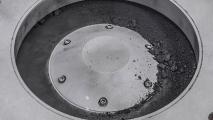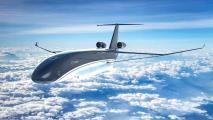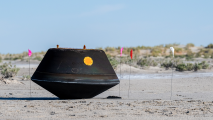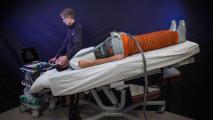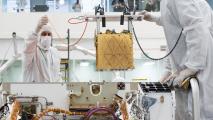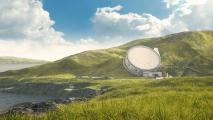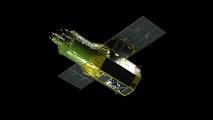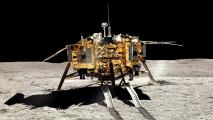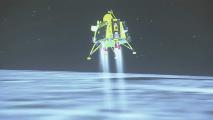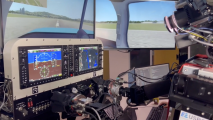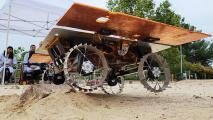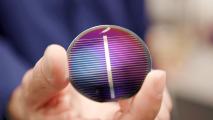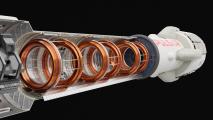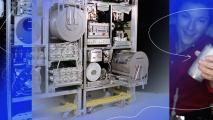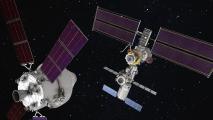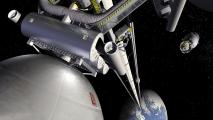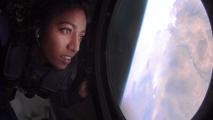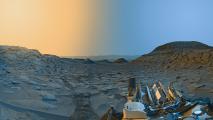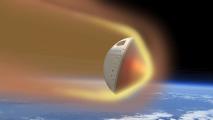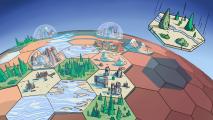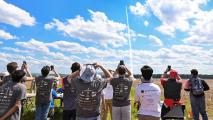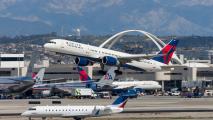Field: Aerospace
The search for anti-gravity propulsion
Exploring the strange intersection of science, conspiracy, and military secrecy in the decades-long quest for anti-gravity propulsion.
The billionaire building space lasers to power Earth
Space startup Aetherflux has a mission straight out of sci-fi: harvest solar power in orbit and beam it down to Earth via laser.
This startup is racing to mine the final frontier
AstroForge isn't afraid to take risks if it means being the first to mine asteroids for the rare metals we need for many clean energy technologies.
T-Minus: Counting down the top 10 space stories of 2024
A look back on the 10 greatest space stories of 2024, from SpaceX's "Mechazilla" to a first-of-its-kind civilian spacewalk.
T-Minus: Kessler Syndrome
Experts answer 10 big questions about the nightmare scenario that could send us back to the pre-Space Age.
T-Minus: 10 milestones in commercial spaceflight
T-Minus looks back at 10 major milestones in the commercial space industry — including several SpaceX triumphs.
T-Minus: 10 space startups to watch
Today's aerospace industry includes hundreds of startups, all vying to be the next SpaceX. Here are 10 that could actually do it.
Ian Brooke wants to revolutionize flight as we know it
This Y Combinator-backed startup has invented a new kind of jet engine, radically more efficient and versatile than anything before it.
T-Minus: 10 space stations of the future
The International Space Station may be nearing retirement, but 10 new space stations are just preparing for launch.
T-Minus: Counting down 10 upcoming moon missions
A countdown of 10 upcoming moon missions, all leading up to the one expected to return NASA astronauts to the lunar surface.
T-Minus: SpaceX’s Starship vs. Boeing’s Starliner
A breakdown of SpaceX's Starship, Boeing's Starliner, and what they mean for the future of space exploration at NASA.
T-Minus: How will solar storms affect Mars astronauts?
Freethink’s breakdown of the biggest space news, featuring NASA's efforts to protect astronauts from intense solar storms.
T-Minus: How to not die on (the way to) Mars
A breakdown of the five biggest threats to future Mars astronauts and what NASA scientists are doing to overcome each one.
Life on Mars, together
Researchers spent two weeks at the Mars Desert Research Station conducting an analog mission for potential future trips to Mars.
NASA hopes private space companies can rescue its $11 billion Mars rock mission
If this ambitious NASA mission unraveled, scientists would lose their chance to learn much more about the red planet.
T-Minus: New SpaceX fashion, a Mars mystery, and more
Freethink counts down the biggest space news, featuring new spacesuits, a mission to the dark side of the moon, and more.
Boeing’s Starliner spacecraft was set to launch on May 6 — but was delayed again
Boeing’s Starliner launch – delayed again – will be an important milestone for commercial spaceflight if it can manage to launch.
T-Minus: Psyche phones home, NASA sets sail, and more
Freethink counts down the biggest space news, featuring a new kind of space communication, lots of orbital debris, and more.
T-Minus: $11B Mars rocks, Voyager 1’s resurrection, and more
Freethink counts down the biggest space news, featuring NASA's Mars rock request, the Dragonfly mission, and more.
T-Minus: SpaceX’s military launch, a rocket family’s final flight, and more
Freethink counts down the biggest space news, featuring a new kind of military satellite, the solar eclipse, and more.
Starlink competitor unveils new internet satellite
Satellite internet startup Astranis just unveiled Omega, a new, larger satellite that could help it close the digital divide.
T-Minus: SpaceX’s first “Bandwagon” launch, NASA’s future moon vehicles, and more
Freethink counts down the biggest space news, featuring a new SpaceX service, a request for "moon time," and more.
T-Minus: Counting down the 10 biggest “firsts” in space exploration
A special edition of Freethink's weekly countdown of space news, featuring the 10 biggest milestones in humanity's exploration of space.
Hypersonic startup unveils its first aircraft
Hermeus just unveiled its first flight vehicle, putting it a major step closer to developing first-of-their-kind hypersonic aircraft.
China is one step closer to having a nuclear-powered spacecraft
Chinese researchers say they are making progress on a nuclear-powered spacecraft that could dramatically accelerate space travel.
T-Minus: Bezos’ space station advances, Boeing’s capsule crews up, and more
Freethink counts down the biggest space news, featuring a new space station, NASA's next astronaut transporter, and more.
Drugs made in space “cooked real good,” says startup
Varda Space Industries has shared the results of its first mission to manufacture "space drugs" in Earth's orbit.
T-Minus: Starship reaches new heights, volunteers discover “active” asteroids, and more
Freethink counts down the biggest space news, featuring Starship's third test flight, a new Mars volcano, and more.
Expert explains why a nearly new Boeing 737 MAX 9 door flew off
A 60-pound “door plug” blew out from a nearly new Boeing 737 MAX 9 in flight at 16,000 feet, leaving a gaping hole in the fuselage. Why?
T-Minus: A new rocket explodes, China looks to Mars, and more
Freethink's weekly countdown of the biggest space news, featuring Space One's flight failure, China's plans to collect rocks on Mars, & more.
SpaceX reaches new heights with Starship’s third test flight
Starship’s third test flight was a bigger success than the previous two, but SpaceX’s rocket wasn’t quite able to stick the landing.
T-Minus: An exploding asteroid, Odie’s final transmission, and more
Freethink's weekly countdown of the biggest space news, featuring a new DART simulation, the end of Odysseus, and more.
Safer skies with self-flying helicopters
Engineers start with an existing helicopter model and add control, sensing, and other software systems to make it autonomous.
T-Minus: An extended asteroid mission, a high-stress moon landing, and more
Freethink's weekly countdown of the biggest space news, featuring SLIM's reawakening, a historic moon landing, and more.
Fusion startup plans to shoot space junk with lasers
Japanese startup EX-Fusion plans to test whether lasers it is developing for nuclear fusion can remove space junk from orbit.
Google AI is searching the world for methane leaks from space
Google will provide computing resources to MethaneSAT, a project to identify climate-harming methane leaks from space.
US startup makes history with stressful, landmark moon landing
Intuitive Machines just made history with the first private moon landing — and the mission was a nailbiter.
T-Minus: Water discovered on asteroids, first space factory comes home, and more
Freethink's weekly countdown of the biggest space news, featuring the return of Varda's space factory, a Russian space weapon, and more.
Aerospace engineer explains why AI can’t replace air traffic controllers
For everyone's safety, humans are likely to remain a necessary central component of air traffic control for a long time to come.
NASA tests autonomous space robots for off-world construction
NASA is developing autonomous space robots to build shelters, solar arrays, and more on the moon and Mars.
T-Minus: SpaceX launches PACE, new ocean moon discovered, and more
Freethink's weekly countdown of the biggest space news, featuring the launch of PACE, the discovery of Mimas' ocean, and more.
T-Minus: Guardians in space, a new (off) world record, and more
Freethink's weekly countdown of the biggest space news, featuring the first Guardian in space, an extended private mission, and more
T-Minus: The Mars helicopter’s final flight, a moon lander’s reawakening, and more
Freethink's weekly countdown of the biggest space news, featuring Ingenuity's final flight on Mars, SLIM's revival, and more.
NASA lays out the path to space-based solar power
A NASA study found that space-based solar power is likely far too expensive, but it also details what would need to happen to make it work.
Researchers release open-source space debris model
The MIT Orbital Capacity Assessment Tool lets users model the long-term future space environment to map space debris.
T-Minus: NASA cracks asteroid capsule, Japan joins exclusive moon club, and more
Freethink's weekly countdown of the biggest space news, featuring Japan's moon landing, NASA's asteroid sample, and more.
Ice plumes could reveal signs of life on Europa and Enceladus
A new study shows how we could study the icy plumes of Europa and Enceladus without damaging any complex organic molecules in the process.
T-Minus: NASA’s Artemis update, a rocket’s maiden flight, and more
Freethink's weekly countdown of the biggest space news, featuring NASA's Artemis update, the maiden launch of Vulcan Centaur, and more.
Space Force pays Microsoft $20 million for a space simulator
Microsoft is building an advanced space simulator for the US Space Force so that its members can train in VR.
T-Minus: SpaceX’s direct-to-cell satellites, XRISM’s first images, and more
Freethink's weekly countdown of the biggest space news, featuring SpaceX's direct-to-cell satellite launch, XRISM's first images, and more.
The 21 most exciting space missions of 2024
2024 is expected to deliver huge wins for the space industry, including 10 moon missions, more Starship launches, and a historic sun swoop.
T-Minus: SpaceX’s spaceplane launch, Jupiter’s “pizza moon,” and more
Freethink's weekly countdown of the biggest space news, featuring SpaceX's spaceplane launch, a new image of Io, and more.
NASA beams home cat video from 19 million miles away
In a history-making demonstration, NASA used invisible lasers to send a cat video to Earth from deep space.
T-Minus: Counting down the 10 greatest space stories of 2023
Freethink's countdown of the biggest space news of 2023, featuring major rocket launches, groundbreaking astronomy discoveries, and more.
T-Minus: Missing space tomato found, a stellar remnant revealed, and more
Freethink's weekly countdown of the biggest space news, featuring NASA's missing space tomato, Webb's new stellar remnant image, and more.
T-Minus: A river of stars, NASA’s next moon landing, and more
Freethink's weekly countdown of the biggest space news, featuring a newly discovered stellar stream, NASA's next moon mission, and more.
World’s largest robots will help airlines cut carbon emissions
Norwegian startup Avinxt is building massive AI robots to help airlines reduce their emissions, save water, and inspect their planes.
T-Minus: Starship’s big flight, an alien-hunter’s gift, and more
Freethink's weekly countdown of the biggest space news, featuring Starship's second test flight, a new "dark mysteries" telescope, and more.
Amazon’s satellites ace first tests in space
Amazon’s Project Kuiper prototypes have aced their first tests in space, putting the company a major step closer to competing with Starlink.
Elon Musk’s SpaceX Starship enters space for the first time
SpaceX’s Starship — the world’s biggest rocket — reached space on its second attempt, but the test wasn’t a complete success.
One company you’ve never heard of is helping avoid space catastrophes
LeoLabs uses advanced algorithms, cloud computing tech, and a global network of ground-based radars to track objects in low-Earth orbit.
Biggest aircraft since the Hindenburg cleared for test flights
Pathfinder-1, a massive airship developed by Google cofounder Sergey Brin’s LTA Research, has begun flight testing.
T-Minus: NASA’s surprise asteroid, China’s reusable rocket, and more
Freethink's weekly countdown of the biggest space news, featuring a surprising asteroid discovery, a new reusable rocket, and more.
Mouse embryos grown in space for the first time
A mouse experiment on the International Space Station suggests humans might one day be able to reproduce in space.
T-Minus: Stranded space drugs, a new moon lander, and more
Freethink's weekly countdown of the biggest space news, featuring a stranded space factory, Jeff Bezos' new moon lander, and more.
NASA spends $50K on liquid metal spacesuit material
NASA-backed engineers are developing a new spacesuit material that will use liquid metals to repel lunar dust on demand.
NASA funds AI lasers to zap space junk
NASA is funding the development of AI space lasers to protect its spacecraft and astronauts from potentially deadly space junk.
T-Minus: SpaceX’s wild pace, a marsquake mystery solved, and more
Freethink's weekly countdown of the biggest space news, featuring SpaceX's launch problem, a marsquake mystery, and more.
T-Minus Weekly: Psyche launches, NASA unveils asteroid samples, and more
Freethink's weekly countdown of the biggest space news, featuring the launch of the Psyche, the reveal of NASA's asteroid samples, and more.
SpaceX’s Starlink is now available across the entire US
SpaceX's Starlink has expanded its satellite internet coverage to include the entire US and announced an upcoming "Direct to Cell" service.
NASA’s Psyche mission is on its way to a metal asteroid
NASA has successfully launched its Psyche mission, sending a spacecraft on a 2.5-billion-mile journey to a metal-rich asteroid.
T-Minus Weekly: A first for Europe, Musk’s Starship update, and more
Freethink's weekly countdown of the biggest developments in space, featuring a first for Europe, Musk’s Starship update, and more.
NASA’s asteroid sample contains an abundance of carbon and water
On October 11, NASA shared its first update on the Bennu asteroid sample brought to Earth by the OSIRIS-REx mission.
This massive autonomous cargo plane could slash shipping costs
A UK startup has an ambitious plan to slash the cost of air freight by shipping goods in a massive autonomous cargo plane.
T-Minus Weekly: An astronaut’s return, a Martian dust devil, and more
Freethink's weekly countdown of the biggest developments in space, featuring the return of NASA's Frank Rubio, a dust devil on Mars, and more.
Webb telescope spots strange objects in the Orion Nebula
New James Webb Space Telescope images of the Orion Nebula include more than 100 strange objects that are neither planets nor stars.
T-Minus Weekly: NASA’s first asteroid sample, Stoke’s big hop, and more
Freethink's weekly countdown of the biggest developments in space, featuring NASA's first asteroid sample, a Curiosity milestone, and more.
NASA has retrieved its first asteroid sample
NASA has just retrieved its first asteroid sample, bringing nearly 9 ounces of the asteroid Bennu to Earth.
Spending time in space can harm the human body − but scientists are working to mitigate these risks before we go to Mars
With NASA planning more missions to space in the future, scientists are studying how to mitigate health hazards that come with space flight.
T-Minus Weekly: Victus Nox, a record-breaking ISS mission, and more
Freethink's weekly countdown of the biggest developments in space, featuring the launch of Victus Nox, a record-breaking mission, and more.
T-Minus Weekly: The end of O2 on Mars and the week’s other big space stories
Freethink's weekly countdown of the biggest developments in space, featuring the launch of XRISM, the end of MOXIE, and more.
NASA finishes the first experiment to make oxygen on Mars
NASA has officially wrapped up the Mars Oxygen ISRU Experiment (MOXIE), which was the first tech to generate oxygen on Mars.
SpinLaunch will hurl payloads into orbit, cutting the cost of launch by 20x
Rockets are big because they require enormous amounts of fuel. SpinLaunch’s method does away with much of that by hurling payloads into space.
NASA is spending $850,000 to make a bag for space trash
TransAstra has secured a $850,000 NASA contract to build an inflatable bag for capturing space trash, which could then be recycled in orbit.
NASA’s next-gen X-ray observatory is ready for launch (Updated)
XRISM is a next-gen X-ray observatory expected to revolutionize our understanding of the universe’s more energetic objects.
New moon map reveals structures hidden beneath the lunar surface
A new moon map that reveals structures hidden deep beneath the lunar surface also helps unravel the mystery of the moon’s past.
India makes history by landing on the lunar south pole
India is the first nation to soft land on the lunar south pole, an elusive region thought to harbor water ice.
A robot pilot is ready to fly a real plane — are you onboard?
PIBOT, a humanoid robot pilot developed in South Korea, is ready to take control of a real plane for the first time.
NASA is sending a team of autonomous robots to the moon
NASA is sending three autonomous mobile robots to the moon where they’ll have to work as a team under challenging conditions.
NASA gives Blue Origin $35 million to turn moon dust into solar cells
A technology that autonomously fabricates solar cells out of lunar regolith just earned Blue Origin a $35 million NASA contract.
A fusion rocket designed to travel 500,000 mph is under construction
British startup Puslar Fusion is developing a fusion rocket it says will travel 500,000 mph, expanding our reach throughout the solar system.
NASA now recycles 98% of astronauts’ urine and sweat
A new water recycling system on the ISS can recover a record-breaking 98% of the water used by astronauts.
NASA’s ChatGPT-like AI will let spaceships talk to astronauts
NASA is developing a ChatGPT-style interface for spacecraft, giving astronauts the ability to talk to the machines using natural language.
Space elevators are inching closer to reality
Tremendous progress has been made developing the materials necessary for a space elevator — but our need for one could soon disappear.
Virgin Galactic sets dates for first commercial space flights
Virgin Galactic is finally ready to begin commercial space flights, with tickets currently going for $450,000 each.
NASA shares colorful “postcard” of Mars’ surface
NASA has used photos taken by the Curiosity rover to create a gorgeous “postcard” of the Martian landscape.
SpaceX successfully launches world’s first “space factory”
SpaceX has successfully deployed a “space factory” developed by startup Varda Space Industries to manufacture drugs in microgravity.
Can “terraforming” turn Mars or the moon into Earth 2.0?
Terraforming — the hypothetical process of making another place “Earth-like” — offers the hope of turning Mars or the moon into Earth 2.0.
Students build reusable rocket, win $5,000 from NASA
The University of Alabama in Huntsville has won Student Launch 2023, NASA’s annual rocket-building competition.
Delta debuts spaces for passengers with wheelchairs
Passengers who use a power wheelchair have a uniquely arduous air travel experience. But a new seat looks to change that.




